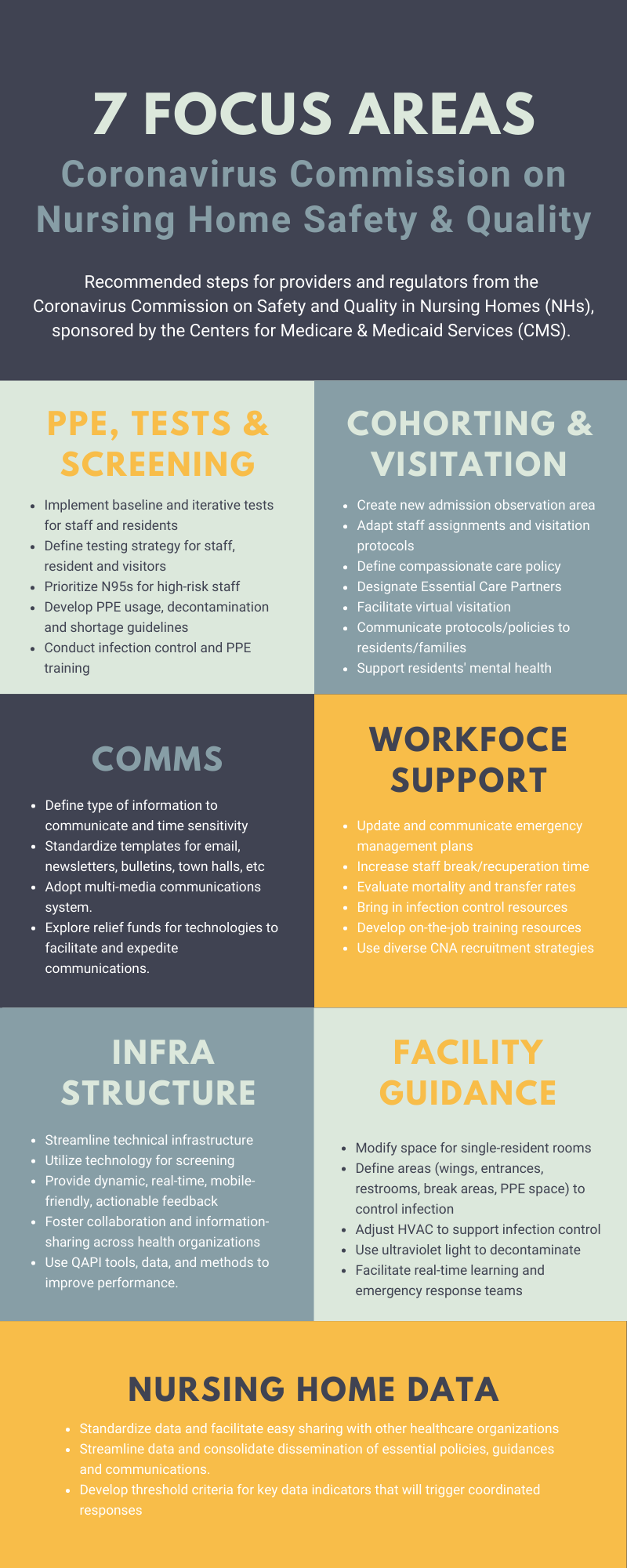Last week, CMS released a 158-page Toolkit on State Actions to Mitigate COVID-19 Prevalence in Nursing Homes to include 15 sections of best practices from various states. We've pulled out some of the best of best in Nursing Home Communications and Screening/Visitors for your quick scan this week.
Read on and download/print our At-A-Glance infographic to share among your peers.
Technology
One of your best defenses in mitigating COVID-19 is technology to help residents stay connected. This can be as simple as investing in tablets or seeking out generous partners.
FutureCare invested in a robust new telecommunication system that enables each patient to have remote face to face communications with their loved ones via iPads.
Meanwhile, Massachusetts Senior Care with the help of the attorney general continues to secure donations of tablets -- 800 and growing -- from companies like Amazon, Walmart, Teel Technologies, and Acer.
Visitation Creativity
If connecting to family using technology is still leaving your residents feeling let down, here are some ideas that may help.
Arkansas Greenhurst Nursing Center created glass booths to allow residents to visit with loved ones. Avera Prince of Peace Retirement Community in South Dakota also created a visitation booth using plexiglass.
The Lincoln Home in Newcastle, Maine divided their porch in half for safe family visitation, with residents entering from the inside, and guests from the outside. "We can truly see that she's doing ok," says one popular resident's family.
Communications Centers
COVID-19 is placing a heavy demand on you to communicate with not just families, but many government agencies. Some facilities have hired or designated staff members strictly for communications as a means of efficiency. Here's how some others are tackling communications.
As a liaison between residents and family, the New Mexico Ombudsman Program is conducting regular Town Hall meetings to hopefully reach more people at once, as they answer COVID-related questions and educate on resident rights, family councils, technology innovations, etc.
PruittHealth set up an Emergency Operations Center (EOC) that is active 24 hours a day, seven days week to answer questions or to schedule a video chat with loved ones.
Lastly, Tieszan Memorial Home in South Dakota is simply using its social media page to keep the community and resident's families informed of all things COVID-19.
/Prime-Care-Technologies-Logo.png?width=191&height=55&name=Prime-Care-Technologies-Logo.png)



